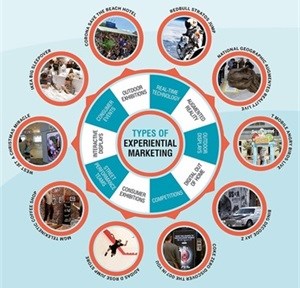
Marketing & Media trends
Industry trends
BizTrends Sponsors
[BizTrends 2016] Immersive experiences to dominate experiential
Experiential marketing across the continent is all about participation - engaging consumers in an activity that captures the true essence of a service or product. It has become a part of the norm that brands of late are more engaged with their consumer on an emotional and interactive level. This is the true fun of what experiential marketing is all about.
Studies by the Event Marketing Institute (EMI) and Mosaic note that "93 % of consumers believe live events are more effective than TV ads, with 89 % saying experiential events improve their understanding of a product or service better than a TV, print, online or radio ad does. A whopping 96 % are more likely to buy a product after participating in a branded live event, and 74 percent of consumers report having 'a more positive impression' of a company as a result."
The above study forms the basis of some of the trends I foresee for experiential marketing in Africa for 2016.
Each person on the African continent is "one of a kind" - meaning that consumers will desperately crave more attention and expect more customised and personalised products, services and experiences, wherever they may be on the continent. This will be fuelled by:
1. Non-fiction storytelling
The stories a brand tells should reflect real brand values that differentiate and meet consumers' needs, otherwise brands will end up entertaining rather than engaging.
2. 360° experience
Consumers are far savvier than ever before, and will be even more so in 2016, which means they will be looking for an experience that goes beyond a singular, "Wow!" moment. Rather, one that moves through the entire brand communication and experience. Coca-Cola's "Put Your Name On A Coke" experience was a brilliant campaign illustrating this in 2015.
3. Real-time is essential
As we have all seen with the rise of YouTube stars, people across the continent will be expecting to see the rise of live streaming, allowing us unrestricted access behind the scenes. Sure, live video streaming is nothing new (think Periscope) but it's now up to brands to smartly utilise video-streaming apps and services at their disposal to provide a window in to another person or brand's world.
4. Who am I really? "You should know me by now, surely," unimpressed face
How well do you know your consumers? Do you acknowledge and value their loyalty? Consumers know that a lot of data is collected on them, and many consumers have experienced, or are aware of, recent data breaches. Good or bad, consumers expect organisations to have abundant data on them, to "know them" and to recognise and acknowledge the value of their relationship. Bear this in mind when coming up with your experiential marketing strategy.
5. Immersive experience
Experiences where consumers interact with certain aspects of a brand in interesting, interactive and memorable ways will be a biggie. A simple example of this is different elements of entertainment like Madame Zingara's. Engaging with consumers on another level - where they wouldn't be able to in the comfort of their own home. Brands need to hone in on this.
6. Pop-up experiences
These will continue to make an impact - as long as brands continue to interact with consumers in unexpected places, and with unexpected results. A good example is the Martell 1715 dining experience.
7. Human-to-human contact
Brands should get emotional. The really successful brands on the continent will be the ones who identify the needs and emotions of their consumers, and use this as a foundation for meaningful positioning, differentiation, and authentic storytelling. This stems from the need for human-to-human application and connection. Even though technology is a force to be reckoned with, brands should never underestimate the power of raw human-to-human contact and appreciation. This speaks louder than anything.
What happens offline gets talked about online, and what happens online gets seen by everybody.
















